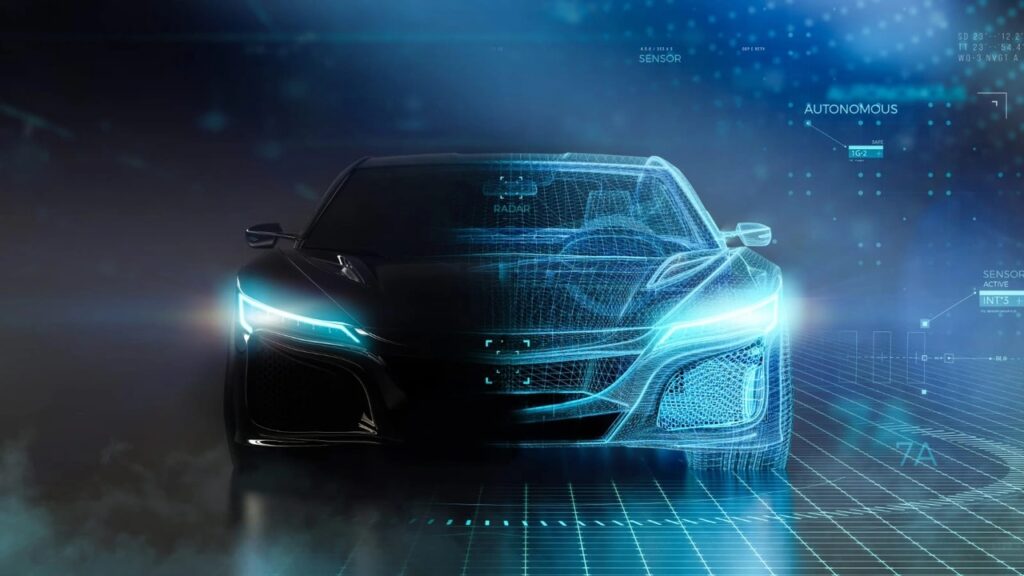The automotive industry is undergoing a massive transformation, and Software-Defined Vehicles (SDVs) are at the heart of this evolution. Unlike traditional vehicles, where hardware dictates functionality, SDVs rely on software to control and enhance vehicle performance, safety, and user experience. This shift is reshaping how cars are designed, built, and updated.
In this article, we’ll explore what software-defined vehicles are, how they work, and why they are the future of mobility.

What Is a Software-Defined Vehicle (SDV)?
A Software-Defined Vehicle (SDV) is a car where software plays the primary role in controlling and optimizing vehicle functions, from powertrain performance to driver assistance features. These vehicles continuously evolve through over-the-air (OTA) updates, much like how smartphones receive software updates to enhance functionality.
Key Characteristics of SDVs:
- Cloud Connectivity: Vehicles are connected to the cloud for data processing, real-time diagnostics, and remote updates.
- Over-the-Air (OTA) Updates: Manufacturers can add new features, fix bugs, and improve vehicle performance remotely.
- Centralized Computing: Instead of multiple control units, SDVs rely on a centralized, high-performance computing system.
- AI & Machine Learning: AI-driven features such as adaptive cruise control, autonomous driving, and predictive maintenance are integrated into the vehicle.
- Personalization & User Experience: SDVs allow drivers to customize driving modes, infotainment settings, and voice-assisted controls.
How Do Software-Defined Vehicles Work?
Traditional vehicles rely heavily on Electronic Control Units (ECUs)—each managing a specific function like braking, infotainment, or engine control. In contrast, SDVs consolidate these functions into a centralized computing platform that communicates with various sensors and actuators through software.
Key Technologies Powering SDVs:
- High-Performance Computing (HPC): Modern SDVs use powerful centralized processors to handle complex computations efficiently.
- Vehicle Operating Systems (OS): Companies like Tesla, NVIDIA, and Volkswagen develop custom automotive OS to manage software applications.
- 5G & Edge Computing: Faster connectivity enables real-time data exchange between the vehicle, cloud, and infrastructure.
- Artificial Intelligence (AI) & Big Data: AI-driven algorithms enhance autonomous driving, driver assistance, and predictive analytics.
- Digital Twin Technology: Automakers use virtual vehicle models to test software updates before deploying them.
Benefits of Software-Defined Vehicles
1. Continuous Feature Updates
Gone are the days when vehicles remained static after purchase. OTA updates bring new features, security patches, and performance enhancements, extending the vehicle’s lifecycle.
2. Enhanced Safety & Performance
- AI-driven Advanced Driver Assistance Systems (ADAS) improve safety by preventing collisions and assisting in navigation.
- Software updates allow manufacturers to fine-tune engine performance, battery efficiency (for EVs), and driving dynamics.
3. Reduced Hardware Complexity
By consolidating multiple ECUs into a centralized system, automakers reduce weight, wiring complexity, and manufacturing costs.
4. Personalized User Experience
- Drivers can customize settings such as seat position, climate control, and infotainment preferences through software.
- AI-powered voice assistants and gesture controls enhance human-machine interaction.
5. Future-Proofing Vehicles
Traditional vehicles become outdated over time, but SDVs stay relevant through software improvements, keeping them competitive in the market.
Challenges of Software-Defined Vehicles
1. Cybersecurity Risks
Connected vehicles are vulnerable to hacking and data breaches. Automakers must invest in robust cybersecurity frameworks to protect user data and vehicle integrity.
2. High Development Costs
Building an SDV requires significant investment in high-performance computing, AI, and cloud infrastructure.
3. Regulatory & Compliance Issues
Governments and regulatory bodies must adapt to new software-driven automotive standards to ensure safety and compliance.
The Future of Software-Defined Vehicles
The transition to SDVs is accelerating, with major automakers and tech companies investing in AI, cloud computing, and autonomous technology. Tesla, General Motors, Volkswagen, and Mercedes-Benz are leading the way, with new models integrating software-centric designs.
Upcoming Trends in SDVs:
- Full Self-Driving (FSD) Capabilities
- Subscription-Based Features & Upgrades
- Integration with Smart Cities & IoT
- AI-Powered Predictive Maintenance
Conclusion
Software-Defined Vehicles (SDVs) are revolutionizing the automotive industry, making cars smarter, safer, and more adaptable. As automakers shift toward a software-first approach, consumers can expect continuous updates, improved performance, and personalized experiences. However, challenges like cybersecurity and high development costs must be addressed to unlock the full potential of SDVs.
Are you ready for the future of mobility? Let us know in the comments what you think about software-defined vehicles!